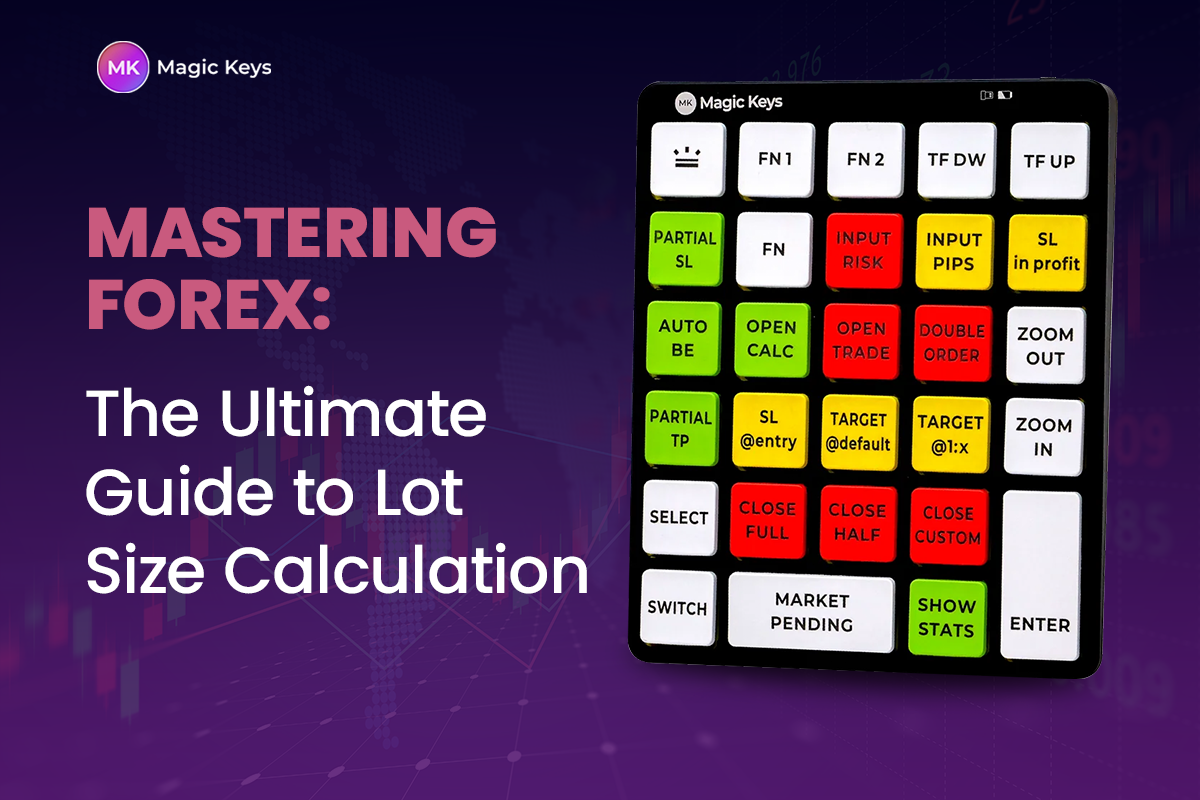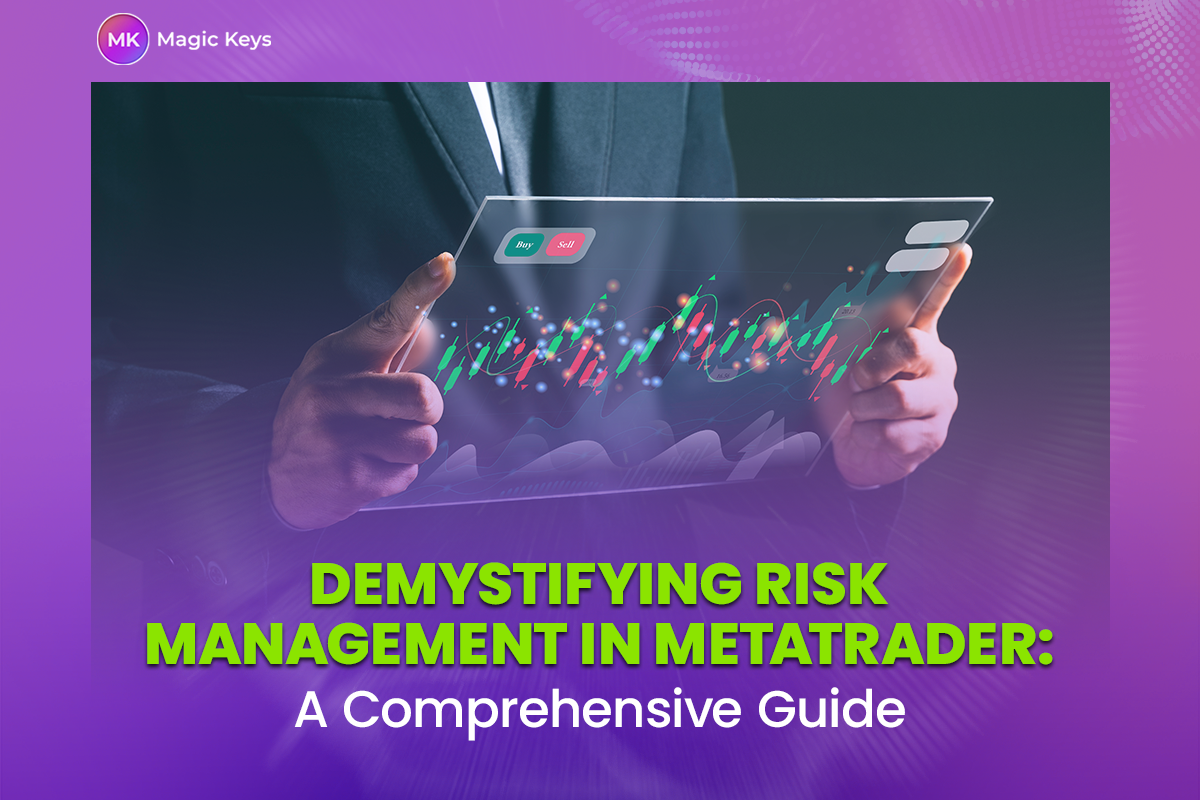So, you have started your forex trading journey and want to limit your risks.
A tool that can help you in the process is a lot size calculator.
Oh, you haven’t heard of it before. No problemo!
In this guide, we are going to break down what a forex lot size calculator is and how it can help you limit your risk.
1. Introduction
So, first things first! What is a lot size calculator?
You must know about forex lot sizes to understand the lot calculator.
The lot size signifies the number of units in the currency pair. The typical lot sizes in forex are micro, mini, and standard.
- A micro lot equals 1000 units of the forex pair.
- A mini lot equals 10,000 units of the forex pair.
- A standard lot equals 100,000 units of the forex pair.
A lot size calculator simply calculates the trade size based on risk tolerance and the trading account size.
For example, let’s say our friend Jim has $10,000 in equity in his account. He wants to take a 2% risk on a single trade, i.e., $200.
So, the lot size calculation will look like this:
Lot size = Account Equity x Risk Percentage / Dollar Amount
So, if you do the calculation, the lot size is 1.
You need to know that different lot size calculators have different options. But the basic calculations remain the same.
Can you tell what the other name of the lot size calculator is?
Shoutouts to those who said position size. If you come across a position size calculator, don’t get freaked out; it’s the other name of the lot size calculator.
But you’d be thinking, Why is this important?
Here’s why: Managing risk is and should be the number one priority for any forex trader. So, with the help of a lot size calculator, we can determine our position size and take the trade accordingly.
I’ll delve more into the importance of lot size calculations in a while.
For now, I want to tell you something cool.
As I said, not all calculators are created the same way, so adding something extra on top of a lot size calculator is a big bonus for all traders.
Magic Keys gives us precisely what we want as forex traders. It calculates the lot size and gives you unique features like instant calculation, setting multiple take-profit prices, setting up a partial stop-loss, and much more. You can check out the full features here.

Magic Key tool
Back to our guide!
2. How to Use a Lot Size Calculator in Forex Trading?
As I talked about the lot size calculations above, I want to tell you more about how you can adequately determine forex lot size using a calculator.
The common inputs in a lot size calculator are currency pair, account equity, risk ratio, and dollar amount. So, let’s see how to use the calculator:
- The first step is to determine your account equity. You can do this by going to your trading platform. It tells you the amount you have for trading.
- The next step is to decide how much risk you want to take on the trade. The common risk percentage is 1 to 2%.
- Next, determine the dollar amount you want to set aside for the trade. This is commonly known as setting a stop-loss. For instance, if you risk 2% and your equity is $10,000, the amount is $200, and you can set a SL accordingly.
- Put all the info in the lot size calculator, and you are done! It is so much easier than manually going through calculations.
You can always adjust your risk or the dollar amount. But it’s important not to go yahoos on your trades and not risk more than 2%.
3. Importance of Proper Lot Sizing for Traders
Here, I want to explain why proper lot sizing is important for forex trading.
Proper risk management
The most important feature of the lot size calculator is that it helps with risk management. Do you know that many traders quit within the first year?
Why?
Because they don’t have an idea of risk management.
And what better way to manage risk than by determining the proper size of the trade?
Also, it helps in setting stop-loss and take-profits with the risk/reward ratio.
Now, an average calculator may not have the option to set SL and TP, but with the help of the Magic Tool, you can set up partial stop-loss and take-profit.
 Physical Magic Tool Calculator
Physical Magic Tool Calculator
Keeping emotions at bay
You don’t have to stress about the drawdowns eating your balance when you have a proper lot size. You know that your risk exposure is calculated correctly according to your account. So you don’t have to have sleepless nights.
Being super adaptive
We don’t know what the market may do in the next second. The volatility can increase significantly, and you will get wiped out if you aren’t prepared.
A lot size calculator considers market fluctuations so you can adjust your positions accordingly.
4. Different Lot Size Calculation Methods in Forex
The method I mentioned above was a simple way of how the forex lot size calculator works. However, there are various methods to find out the lot size.
I am going to talk about three different approaches to lot size calculations.
Fixed lot size
In this approach, you use a fixed number of lots on every trade. For instance, you can trade with the standard lot every time. So, you aren’t taking into account equity and risk percentage.
Percentage risk
In this method, you calculate the position size based on your account equity. It has the same formula as the one I mentioned above;
Position size = Account Equity x Risk Percentage / Dollar Amount
Optimal F
For those who want something fancy, there is a statistical model. The Optimal F method uses statistical measures and historical data to find the optimal fraction value of the account.
 Optimal F calculation
Optimal F calculation
5. Position Sizing Strategies for Risk Management
We have determined that position sizing is essential to risk management strategy. Without it, trade would be like using a unicycle on a thin rope.
It helps in balancing risk and reward.
Here’s how you can use position sizing in your trading strategy:
Determining risk tolerance
With proper position sizing, you can assess risk tolerance by looking at account size, financial goals, and trading psychology.
Setting stop-loss levels
You can also set stop-loss based on position sizing. First, you set a SL and then adjust the position size according to your pre-determined risk.
Let’s bring our friend Jim again and show how position sizing is helpful:
Suppose Jim has a $2000 account and wants to risk 2% on a single trade. According to his analysis, his stop-loss should be 50 pips. So, here’s how he can calculate the position size.
Risk per trade = Account equity x risk
So, the risk per trade is 2000 x 0.02 = 40.
Jim has set a 50-pip SL, and each pip has a value of $10. So, he can find the position size as follows:
Position size = Risk per trade / SL x Pip value
So, we have 40/50x10 = 0.08.
6. Calculating Lot Sizes Based on Account Size and Risk Tolerance
As with many things in life, you need to follow some rules to determine the lot size.
These are super simple rules, and you may have gotten an idea about them by now. So, here it goes:
- Decide on the proper risk percentage. The ideal is between 1 and 2%.
- You need to determine the SL for each trade.
- Change the lot size according to your equity. As the account appreciates/depreciates, you have to adjust the lot size.
These are some rules you must follow to manage your trades effectively with the lot size calculator.
7. Lot Size Calculators: Manual vs. Automated Tools
Some of you might be saying this formula is super easy. I always got an A in math and will do it manually.
Sure thing, you can do it manually. But why waste precious seconds on calculations when tools are available for you?
Here are some of the pros of using an automated lot size calculator:
- Automated calculators are super accurate, and they eliminate the process of human error.
- Many automated tools can be integrated with trading platforms. For instance, can Magic Keys be integrated with MT4, MT5, and cTrader? That’s pretty cool, right?
- Some automated calculators also come with additional features, like risk analysis.
8. Common Mistakes in Lot Size Calculation and How to Avoid Them
I know there’s always a chance of error. You may get bogged down and can’t do the calculation correctly. So, for this, you need to remember these common errors and have to fix them.
- Not taking into account your equity and risk tolerance. It’s important to consider these factors before jumping into lot size calculations.
- Not setting stop-loss levels. Every trade must have a stop-loss, period.
- Using a fixed lot size rather than considering the actual risk of a trade. Using a percentage lot-size calculation approach rather than a fixed lot-size method is better.
- Not using position size calculations. As I said, doing calculations manually can take time and cause errors. So, always use a calculator.
9. Best Practices for Lot Size Calculation in Forex Trading
We talked about the pitfalls, and now let’s talk about the best practices you can use for lot size calculations:
- Determine your risk tolerance. I have stressed this many times throughout this guide. So, it’s the number 1 best practice.
- Always set a stop-loss.
- Use the percentage risk model.
- Adjust your lot size according to your balance.
- Be sure to check market volatility, as you never know how the market will behave.
10. Conclusion
So, there you have it!
Now you understand the mystical world of lot size calculators. You need to master lot size calculations to stay in the game for the long run.
Practice the best methods of using a forex lot size calculator and use an automated calculator. So you can streamline your trading.
If you haven’t used lot size calculators before, starting now, it is important to learn and practice them as much as possible.
If you want to master the art of lot size calculations with plenty of extra features, then Magic Key can be your ultimate trading friend.

